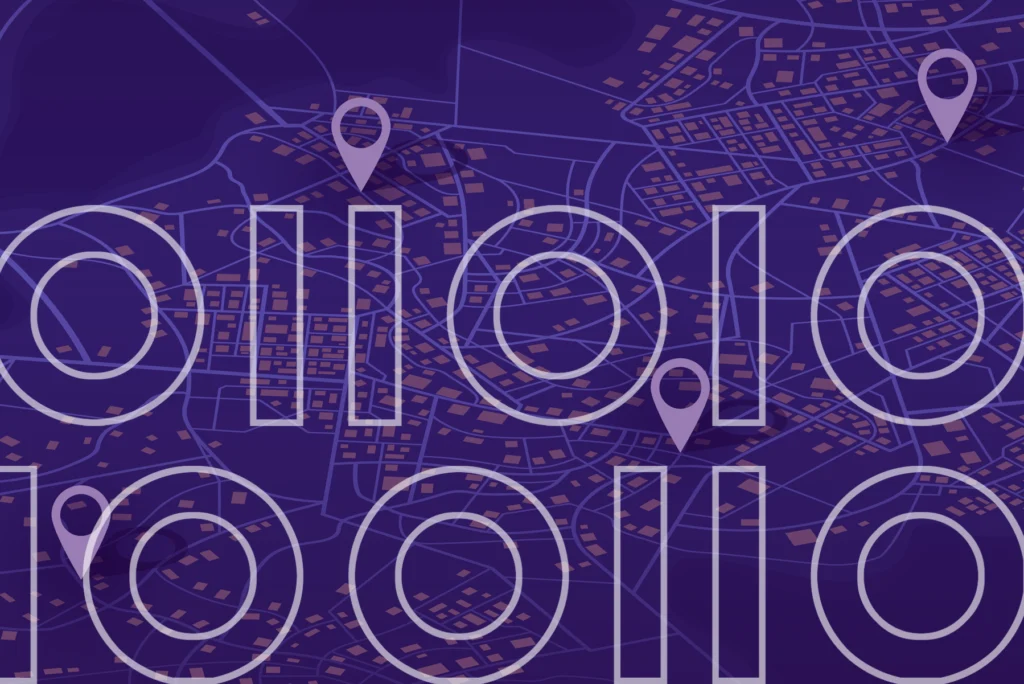Customer data? It’s a big deal, and your organization probably has a team of people fully focused on ensuring it’s managed and used as effectively and responsibly as possible.
Product data? Ditto – lots of attention and priority typically applied to it.
If there’s one unsung hero when discussing the outsized impact trusted data can have on an organization, it’s location data.
Think about it: nearly every type of organization relies on location data in some way, shape, or form – whether it’s a delivery company navigating last-mile logistics, an insurer assessing risk on a property, or a retailer choosing its next storefront. And yet, location data is still dramatically underutilized. For many, maybe it’s just a checkbox attribute they work on as part of their customer data strategy.
Now, that’s not to say that location data is completely overlooked. In fact, I’m encouraged by the increasing number of organizations today that are sharpening their focus on it (I’ll dive into some of those below).
However, the hard truth is that location data is not being harnessed widely enough to capture all the exponential value it holds.
Why is that? No different than familiar issues with your customer, product, and other data challenges, managing location data has also been notoriously difficult. Disparate systems, inconsistent formats, and messy address records have all stood in the way. And if your location data isn’t accurate, complete, and accessible across your business, it will increase business risk instead of generating business value.
Let’s talk about where location data impacts your business – and how your organization can capitalize on it.

AI and Analytics Use Cases Drive Location Data Priorities
The promise of AI is fueling demand for smarter, more relevant insights, along with agentic AI visions of autonomous decision-making and processes – all highly dependent on extremely trustworthy data. Customer expectations for speed and personalization are also rising, while supply chains and service networks are under constant pressure to perform. And impacting many industries, climate-driven disasters are rewriting the risk landscape.
There are so many industry-specific scenarios where location intelligence insights solve high-impact problems. Here are just a few of the most common (and valuable) ways we see these impacts in action across industries.
1. Product and service delivery
Reliable location data provides a foundation for efficient service. It’s how organizations ensure that orders are routed accurately, field teams show up at the right place, and customers get what they need – on time, every time. Beginning with order processing and extending through to last-mile delivery, location intelligence helps reduce errors, cut delays, and deliver a smoother experience at every step.
2. Risk assessment
From flood zones to wildfire perimeters to crime rates, geographic context is essential to managing risk. Insurers, banks, and public sector organizations use location intelligence to underwrite policies, detect fraud, and respond to threats with greater accuracy and speed. Location-driven insights have become increasingly essential, particularly amid rising climate-related risks.
3. Complex site selection
Choosing where to expand, build, or open a new location can make or break a business’ success. Location intelligence enables organizations to evaluate candidate sites based on demographics, traffic, proximity to competitors, zoning, and other relevant factors. They can then model trade areas, forecast performance, and prioritize the right investments to maximize returns on these site investments.
4. Targeted location-based marketing
To reach the right audience, in the right place, at the right time, marketing leaders start with clean customer and prospect records, then layer in demographic and geographic context. Location-aware marketing strategies make it possible to personalize offers, tailor messaging, and maximize impact – whether acquiring new customers or re-engaging existing ones.
5. Network planning and optimization
Telecoms, utilities, and others use location data to build smarter infrastructure. By combining subscriber or customer data with accurate geographies and spatial analytics, organizations can identify service gaps, plan buildouts, optimize delivery routes, and make more informed investment decisions.
6. Supply chain resilience
Some of the most common risks and disruptions – like wildfires, floods, or port closures –are all location-based challenges. By enriching data with geographic context, organizations model alternate routes, identify vulnerable nodes, and ensure operations stay agile, efficient, and resilient.
Unlocking Value with a Data Integrity Framework
To support location-centric business priorities like those shared above, use a repeatable, scalable framework. At Precisely, we recommend focusing on these activities to ensure you’re leveraging high-integrity location data:
- Break down silos and ensure consistency by connecting location data across your entire data ecosystem. This can include harvesting location insights from mainframes, enterprise apps, and other legacy systems through modern cloud apps and platforms, and everything in between. When your address data flows freely, so do your insights.
- Prepare. Get it right at the source. Cleanse, standardize, validate, and geocode your location data from the moment it enters your systems, so it’s accurate, complete, and ready to fuel smarter decisions.
- Enrich. Go beyond the basics by layering in valuable geographic context – including property characteristics, demographic trends, boundary data, and more. The richer the detail, the deeper the insight.
- Analyze. Uncover patterns, relationships, and opportunities using spatial analysis. From proximity analysis to route optimization, advanced techniques such as clustering and network analysis transform data into actionable insights.
- Govern. Put guardrails in place to keep your location data trustworthy over time. That means defining mastered address domains, applying business rules, monitoring quality, and ensuring transparency across every touchpoint.
- Activate. This is where you get to put your high-integrity location data to work. Whether it’s powering personalized marketing, informing outreach strategies, or enhancing service delivery, you’ll start to see the real impact of location intelligence come to life.
When you apply this framework, you elevate your location data from the “unsung hero” of your data strategy to a strategic driver of growth, agility, and resilience. With the proper foundation in place, you can trust that your data is ready for whatever challenge or opportunity comes next.
Solution
Location Data Management and Analytics
To unlock real value, you need to integrate, govern, analyze, and operationalize high-integrity location data. That’s how you drive greater efficiency, compliance, customer experience, and other business outcomes.
It’s Time to Lead with Location
Location data isn’t new. But the way we use it (and the value we expect from it) has fundamentally changed – especially with initiatives around AI, personalization, and risk management topping the priority lists of organizations of all kinds.
So, as you move forward in your journey, remember this: understanding the “where” is often the first step to knowing what’s next.
Location data is so much more than a coordinate on a map. When you invest in its integrity, it’ll guide smarter decisions, faster action, and better outcomes – wherever your business is headed. Find out more about what location data can do for you today, and get ready to create bigger and better opportunities tomorrow.







